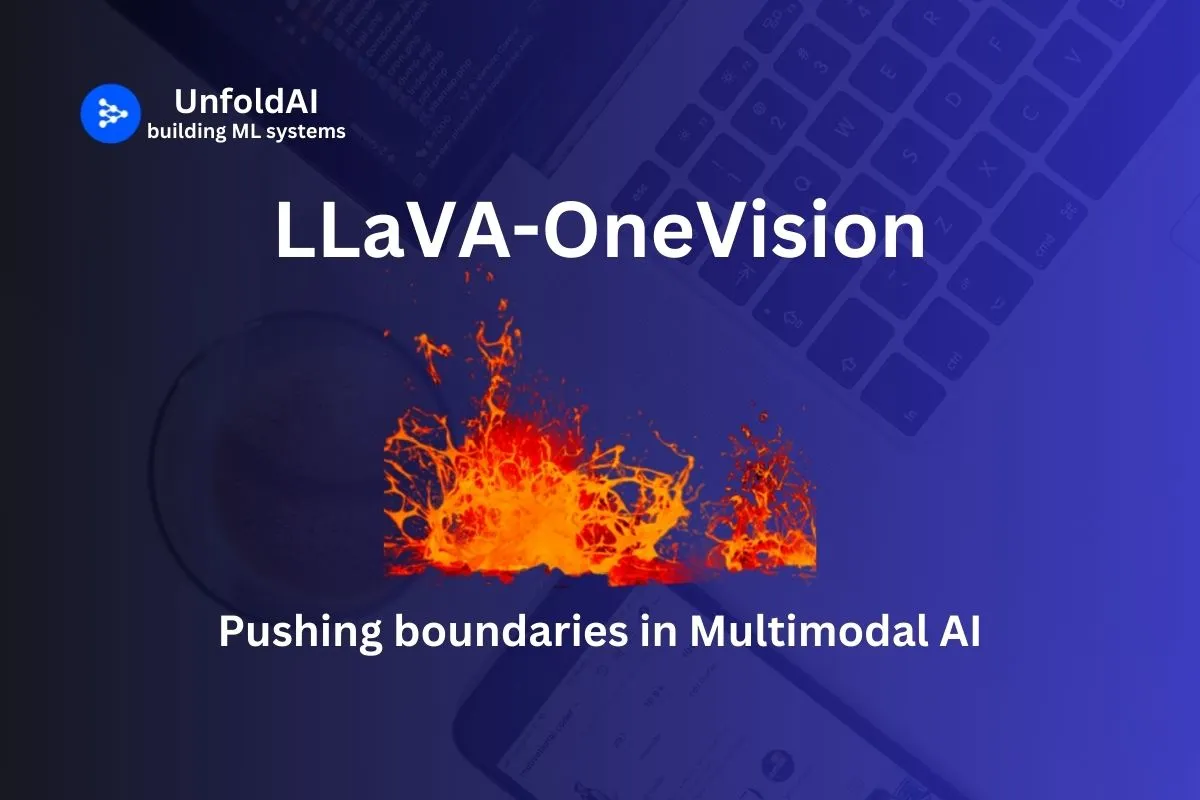LLaVA-OneVision: Revolutionizing Multimodal AI with Seamless Visual Task Transfer
In the rapidly evolving landscape of artificial intelligence, multimodal models have emerged as a frontier technology, promising to bridge the gap between vision and language understanding. Among these innovations, LLaVA-OneVision stands out as a groundbreaking development, offering unprecedented capabilities in processing and understanding diverse visual inputs alongside natural language.
The breakthrough of LLaVA-OneVision
Developed by a team of researchers from ByteDance, NTU, CUHK, and HKUST, LLaVA-OneVision represents a significant leap forward in the field of large multimodal models (LMMs). This open-source project builds upon the insights gained from the LLaVA-NeXT blog series, consolidating advancements in data processing, model architecture, and visual representations.
Versatility across visual domains
At its core, LLaVA-OneVision is designed to push the boundaries of performance across three critical computer vision scenarios: single-image, multi-image, and video understanding. What sets this model apart is its ability to achieve state-of-the-art results in all three domains simultaneously, a feat previously unattained by open-source models.
Innovative architecture
The architecture of LLaVA-OneVision is both elegant and powerful. It combines the Qwen-2 language model as its linguistic backbone with the SigLIP vision encoder for processing visual inputs. A two-layer MLP serves as the crucial projection layer, bridging the gap between visual and language representations. This thoughtful design allows the model to handle a wide range of visual inputs while maintaining a consistent interface with the language model.
Advanced visual representation strategy
One of the most impressive aspects of LLaVA-OneVision is its visual representation strategy. The model employs a balanced approach to token allocation across different modalities, ensuring that single images, multiple images, and video frames are represented equitably. This strategy facilitates better transfer learning and enables the model to generalize its understanding across various visual tasks.
Meticulous training process
The training process of LLaVA-OneVision is a testament to the meticulous approach of its creators. It follows a carefully designed curriculum, starting with a pretraining stage on a dataset of 558,000 samples, followed by stages focusing on high-quality synthetic data, single-image data, and finally, a mixture of single-image, multi-image, and video data. This progressive training regime allows the model to build up its capabilities gradually, resulting in robust performance across a wide range of tasks.
Benchmark-breaking performance
LLaVA-OneVision's performance on benchmarks is nothing short of impressive. It outperforms or matches advanced commercial models like GPT-4V on numerous tasks. For instance, it achieves 85.6% accuracy on the AI2D science diagram understanding task, compared to GPT-4V's 78.2%. In multi-image tasks, such as the LLaVA-Interleave benchmark, it scores 79.9%, significantly outperforming GPT-4V's 60.3%. Even in video understanding tasks, LLaVA-OneVision shows remarkable capabilities, often surpassing GPT-4V's performance.
While LLaVA-OneVision pushes the boundaries of multimodal AI in research, tools like selfGPT are making advanced AI capabilities accessible to everyone, allowing users to transform their personal documents into interactive AI insights without any coding skills.
Emerging capabilities and task transfer
Perhaps the most exciting aspect of LLaVA-OneVision is its ability to exhibit emerging capabilities through task transfer and composition. It demonstrates proficiency in tasks it wasn't explicitly trained for, such as joint understanding of diagrams and charts, GUI interaction for multi-modal agents, and sophisticated video analysis. These emergent abilities highlight the model's potential to generalize and tackle complex, real-world computer vision problems.
Open-source impact on AI research
The open-source nature of LLaVA-OneVision is a boon for the AI research community. By making the training code, model checkpoints, and datasets publicly available, the team behind LLaVA-OneVision is fostering collaboration and accelerating progress in the field of multimodal AI. Researchers and developers can now build upon this foundation, potentially leading to even more advanced and versatile models in the future.
Future implications and applications
As we look to the future, the implications of LLaVA-OneVision are profound. Its ability to seamlessly process and understand various visual modalities alongside language opens up new possibilities in fields such as automated content analysis, advanced robotics, and enhanced human-computer interaction. The model's strong performance in video understanding, in particular, could revolutionize applications in areas like surveillance, autonomous driving, and media analysis.
Conclusion
In conclusion, LLaVA-OneVision represents a significant milestone in the journey towards more sophisticated and versatile AI systems. By demonstrating strong performance across single-image, multi-image, and video tasks, and exhibiting remarkable transfer learning capabilities, it sets a new standard for what's possible in multimodal AI. As researchers and developers continue to build upon this foundation, we can expect to see even more exciting innovations in the field, bringing us closer to AI systems that can truly see and understand the world as we do.
